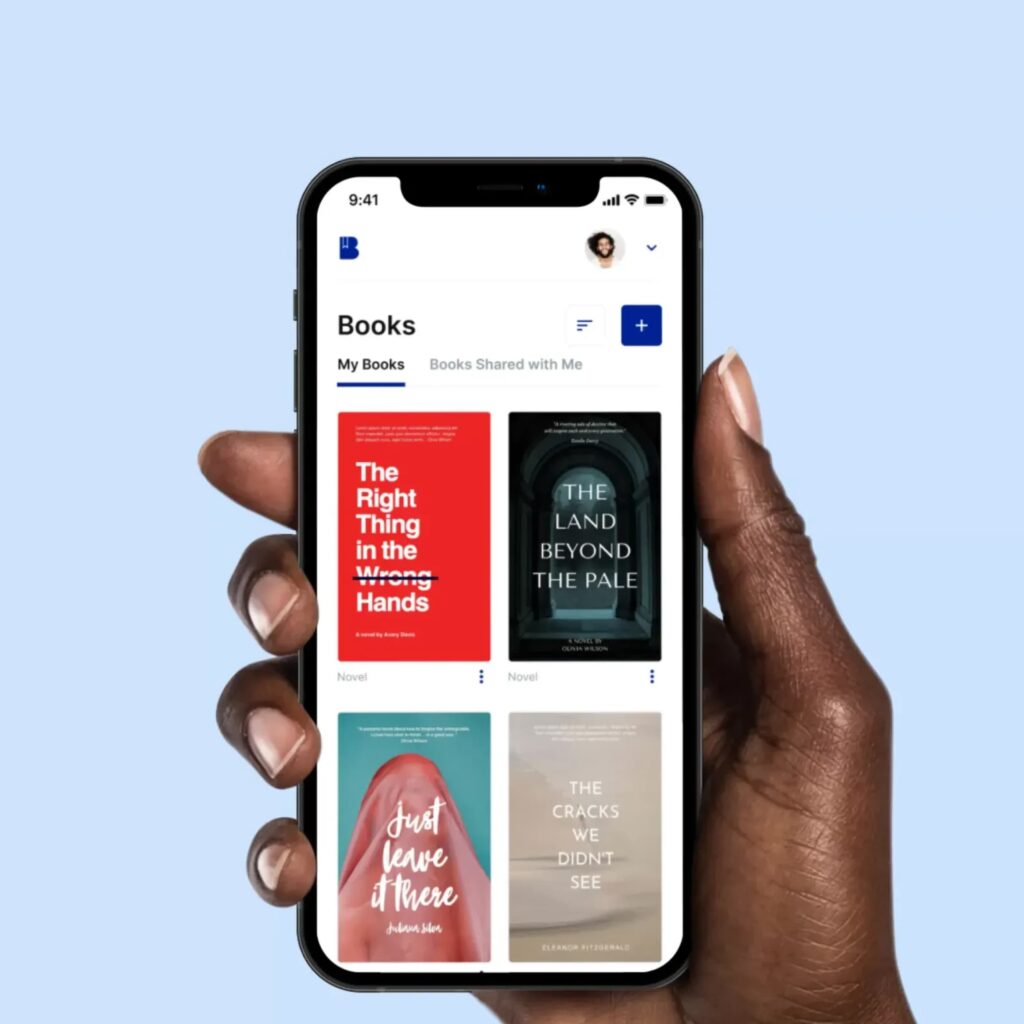Blog
User Interface (UI) vs. User Experience (UX): What’s the Difference?

I. Introduction
User Interface (UI) and User Experience (UX) concepts are often conflated. While they do have overlapping areas and work closely together, they are not the same thing.
They are, however, both critically important in the design and development of successful software applications and digital platforms.
To truly understand and appreciate the distinctions and overlaps between these two vital aspects of product development, we first need to delve into what each concept means and signifies.
A. Importance of User Interface (UI) and User Experience (UX)
As the world becomes increasingly digital, businesses are more than ever reliant on their online platforms. Whether it’s an e-commerce site, a mobile application, or a software-as-a-service (SaaS) platform, how users interact with these digital platforms can significantly influence their perception of a brand or product.
That’s where the importance of UI and UX comes in.
UI refers to the design of the interfaces with which users interact. It involves the design of every visual element a user might interact with on a digital platform, such as buttons, text, images, sliders, and any other interactive features.
A good UI makes a digital product not only aesthetically pleasing but also efficient and easy to use.
On the other hand, UX focuses on the overall experience a user has when interacting with a digital product. It encompasses all aspects of a user’s interaction with a company, its services, and its products.
A good UX meets the user’s needs in the specific context where the user uses the product.
What is good design and how does it drive sales?
🎙️ Podcast
As a SaaS founder, what should you be concerned with in relation to product design?
Good design does not have so much to do with the aesthetic quality of your software. What it has to do with is the convergence between convenience and reliability for your users.
So what you want to achieve is having software that is easy to understand and matches the expectations of your users. And once you match those two factors, you have a good design and good design is the bare minimum for product validation.
Once you surpass those expectations, so you’re not just convenient, you’re like self-explanatory and you’re not just reliable, but your software kind of overtakes the thoughts of your users, then you have not just good design, you have great design and then you can use design as your USP. And in this, indeed, you can concern yourself about that at a later stage in product validation.
Laure Joumier Co-Founder of Menutech
B. Definition and Overview of UI and UX
User Interface (UI) is the series of screens, pages, and visual elements like buttons and icons you use to interact with a device. UI design is the process of designing interfaces to make them easy to use and provide a user-friendly experience.
A UI designer’s role is to anticipate what users might need to do and make sure that the interface has elements that are easy to access, understand, and use to facilitate those actions.
User Experience (UX), however, is much broader. It involves the user’s journey to solve a problem, their interaction with a product or service, and their feelings, perceptions, physical and psychological responses, behaviors, and accomplishments during and after the process.
UX design focuses on creating a system that offers a great experience to its users.
C. Purpose of the article: Understanding the distinctions and overlaps between UI and UX

Understanding the differences and overlaps between UI and UX is paramount for anyone involved in product development or product design.
Both UI and UX play essential roles in the success of a product, and understanding their unique roles and how they complement each other can help businesses build better products.
This article aims to help readers understand these two critical elements in depth. We aim to elucidate the definitions, applications, overlaps, and differences between UI and UX.
After this comprehensive read, you should clearly understand these concepts and why they’re so important in digital software products.
Scale your development and software with confidence!
Master strategy, roadmap, code execution and start to ship more on each sprint.
II. Understanding User Interface (UI)
A. Definition and Core Focus of UI
User Interface (UI) is the space where interactions between humans and machines occur. In the context of digital software products, this often means the graphical layout of an application or website.
It consists of the buttons users click on, the text they read, the images, sliders, text entry fields, and all the rest of the items the user interacts with. This includes screen layout, transitions, interface animations, and every single micro-interaction.
The core focus of UI is aesthetics and interactivity. The UI should be visually appealing and interactive, making the user’s interaction as simple, efficient, and enjoyable as possible. The goal is to lead the user through a product’s interface intuitively, allowing them to engage with a system to complete tasks with ease.
B. Role of a UI Designer
1. Responsibilities and tasks
A UI designer’s role and tasks are wide-ranging and highly collaborative. Their primary role is to design intuitive and attractive interfaces that enhance user interaction and satisfaction.
They do this by:
- Conducting research and understanding the audience for which they are designing.
- Collaborating closely with UX designers to implement and iterate on design solutions.
- Creating and testing interactive prototypes and mockups.
- Designing different interface states (like hover, click, error, disabled) to help users understand the next steps.
- Ensuring visual consistency by outlining and maintaining a design language system, which includes color palettes, fonts, and component libraries.
- Staying abreast with industry trends and developments, constantly pushing for creative and improved designs.
2. Skills and expertise required
UI designers need a combination of both soft and hard skills to be effective in their roles:
- Design Skills: They must have a keen eye for aesthetics and details, including a solid understanding of color theory, composition, typography, and visual hierarchy.
- Technical Knowledge: Proficiency in design tools and editing tools like Adobe Suite (Photoshop, Illustrator, XD), Sketch, Flexclip Figma, or InVision.
- Understanding of Interaction Design: They must have the ability to design and implement interactive elements that provide feedback or guide the user.
- Problem-solving skills: They need to identify potential challenges in design and create effective solutions.
- Communication and Collaboration: Working with various teams and stakeholders (including UX designers, developers, product managers, and even users) requires excellent communication and collaboration skills.
3. Tools and technologies utilized
UI designers make use of a range of software and tools, including:
- Design and Prototyping Tools: Adobe Suite, Sketch, Figma, InVision, and other similar tools are used for creating designs and interactive prototypes.
- Collaboration Tools: Software like Slack, Trello, Jira, and Notion are used for project management and team communication.
- User Testing Tools: Tools such as UsabilityHub or UserTesting can be used to gather user feedback and improve the designs.
- Design System Tools: Tools like Storybook or Zeroheight help manage and maintain the design system for maintaining visual and functional consistency across the product.
III. Understanding User Experience (UX)
A. Definition and Core Focus of UX
User Experience (UX) refers to a person’s emotions and attitudes about using a particular product, system, or service.
It includes the practical, experiential, and valuable aspects of human-computer interaction and product ownership.
UX aims to meet the user’s needs and provide positive experiences that keep users loyal to the product or brand.
The core focus of UX is usability and functionality. It’s about designing the entire process of acquiring and integrating the product, including aspects of branding, design, usability, and function. It also includes your logo, so you can integrate a logo maker into this to streamline the design process and enhance brand visibility.
The UX should guide the user naturally through the user interface, making the experience as intuitive and satisfying as possible.
UX: Think about how a person experiences your product
🎙️ Podcast
Improve Onboarding, Activation and Retention with a better UX with Peter Loving from UserActive
It’s really key to think about this user, how will they do things? How will they achieve their goals? Thinking about the product, what is the functionality? How does that functionality work? I feel that UX is very much an exercise of understanding the person using the product. Then use your problem-solving and creative skills to enable that person to use the product in the easiest, most intuitive, and best way. Fundamentally speaking, UX is the process of researching and understanding somebody, and then creating a product that fits them. We do this with on the research side, we do this with interviews, observations, and research, can have focus groups, and we can observe how users test something.
Peter Loving Founder of UserActive
B. Role of a UX Designer
1. Responsibilities and tasks
A UX designer’s responsibilities are diverse and often interdisciplinary. Their primary role is to ensure a product makes sense to the user and offers a smooth and enjoyable experience.
Their tasks typically include:
- Conducting user research to understand the needs, motivations, and behaviors of users.
- Developing user personas and journey maps to represent the users and their interactions with the product.
- Creating wireframes and prototypes to illustrate the basic functionality and flow of the application.
- Performing usability testing and gathering user feedback to refine and improve the design.
- Collaborating with UI designers, developers, and stakeholders to ensure the product delivers a high-quality user experience.
2. Skills and expertise required
UX designers need a mix of technical, design, and soft skills, including:
- Research Skills: They should have the ability to conduct and interpret user research, including interviews, surveys, and usability testing.
- Design Skills: Although not as visually focused as UI design, UX design still requires a good understanding of design principles, particularly as they relate to creating clear, well-structured user flows and interfaces.
- Communication Skills: UX designers need to be fully focused on and be advocates for the user and explain their design decisions to other team members and stakeholders, so clear and persuasive communication skills are essential.
- Analytical Skills: They need to make sense of user data and feedback and translate it into actionable design improvements.
- Empathy: One of the critical skills of a UX designer is the ability to empathize with users, understand their needs, and design for those needs.
3. Tools and methodologies utilized
UX designers use a variety of tools and methodologies, including:
- Design and Prototyping Tools: Tools like Sketch, Figma, Adobe XD, and InVision are used for creating wireframes and prototypes.
- User Research Tools: Software such as Qualtrics, Google Forms, or SurveyMonkey can be used for conducting surveys. Tools like Lookback or UserTesting are used for remote usability testing.
- Collaboration Tools: Tools such as Jira, Slack, or Trello for communication and project management.
- Analytical Tools: Google Analytics or Hotjar can be used to analyze user behavior.
- UX methodologies: Techniques and approaches such as user personas, user journey mapping, usability testing, A/B testing, and heuristic evaluations are commonly employed by UX designers to understand and improve the user experience.
IV. Delineating UI and UX A. UI vs. UX: Key Differences
1. Definition and scope
While both UI and UX play critical roles in shaping a product’s success, they focus on different aspects of the product design process.
- UI is about the look and feel of the product. It concerns itself with the product’s visual and interactive elements — how each page or component looks and how the user interacts with them. UI design is more concerned with the surface and aesthetics.
- UX is about the overall experience that a user has while using the product. It is concerned with the product’s entire journey and how the user feels while navigating through the product. UX design is more about the overall structure and function.
2. Objectives and goals
- UI aims to create a visually pleasing interface that is consistent and well-designed. The goal is to guide the user visually through a product’s interface, making digital interactions smooth, engaging, and efficient.
- UX aims to create a product that provides the best possible experience. The goal here is to make the user’s interaction as simple and efficient as possible, in terms of accomplishing the user’s goal (like buying something or completing a task).
3. Primary considerations and deliverables
- UI considerations involve anticipating what the users might need to do and ensuring that the interface elements are easy to access, understand, and use. Primary deliverables of UI design include visual designs, style guides, and interactive prototypes.
- UX considerations involve understanding how users interact with a product, what they value, what they need, and what keeps them engaged. Primary deliverables of UX design include personas, user journey maps, wireframes, and prototypes
While UI and UX are distinct, they must work in concert to create a seamless, effective, and enjoyable user experience.
A beautiful design can’t save an interface that’s cumbersome and confusing to navigate, and a brilliant, perfectly appropriate user experience can be hampered by a dull, unappealing UI. They are two halves of the same whole, both essential in the product design process.
V. UI/UX Patterns Within The Saas Industry
What are some of the patterns and mistakes that often come up in SaaS when designing products?
One huge pattern that we come across a lot, and sometimes surprises me how much we see is empty states for screens within the software. A lot of times a user who’s new to a product can land on a particular screen, it might even be the dashboard and it’s empty because obviously their account has no data yet. When you land on an empty screen that’s quite uninspiring if there’s no encouragement to get started and nothing – Visualize how that screen can work for you. The work of a designer is to make that experience great and treat it as a starting point. It would be better to have some form of a welcome to this screen, explaining this new feature that you haven’t used yet, here’s what it can do, and how you would use it. That is easily one of the most common patterns or mistakes that we usually see in SaaS.
Peter Loving, Founder of UserActive
VI. The Convergence: The Role of a UI/UX Designer
A. Understanding the Synergy Between UI and UX
UI and UX, while distinct in their focus areas, are two sides of the same coin. They are most effective when working hand in hand. As such, many companies employ designers who are skilled in both UI and UX design, often referred to as UI/UX designers.
UI/UX designers understand the synergy between UI and UX. They are aware that an effective interface design (UI) contributes to a great user experience (UX) and that a thoughtfully crafted user experience should guide the design of the interface.
They work at the intersection of aesthetics (UI) and functionality (UX), ensuring that both the look and feel of a product and the user’s journey are taken into consideration.
B. Benefits of Combining UI and UX

The integration of UI and UX design roles into a single position has several advantages:
- Unified Vision: A UI/UX designer can provide a unified vision for both the aesthetic and functional aspects of a product, ensuring that the visual and interactive elements work together seamlessly to provide an optimal user experience.
- Efficiency: Having one person or team handle both UI and UX can increase efficiency, as there’s less need for coordination between different teams.
- User-Centric Design: UI/UX designers can ensure a balanced focus on the needs and expectations of users, combining attractive design with functionality to create a product that not only looks good but is also user-friendly and intuitive.
C. Skills and Competencies Required for a UI/UX Designer
1. Technical skills
UI/UX designers need a mix of the technical skills required for both UI and UX design. These might include:
- Proficiency in design and prototyping tools like Sketch, Figma, Adobe XD, or InVision.
- Familiarity with design principles and techniques, including color theory, typography, layout, and grid systems.
- Understanding of user-centered design (UCD) principles and techniques, such as user research, user personas, user journey mapping, and usability testing.
2. Design thinking and problem-solving abilities
UI/UX designers must have strong design thinking skills, which involve:
- Understanding users’ needs and goals.
- Defining and framing problems in human-centric ways.
- Ideating innovative solutions.
- Prototyping and testing solutions.
These design thinking skills, coupled with strong problem-solving abilities, enable UI/UX designers to create solutions that are both visually appealing and effective at solving user problems.
3. Communication and collaboration skills
Excellent communication and collaboration skills are vital for a UI/UX designer. They must be able to:
- Clearly articulate design decisions and rationales to stakeholders.
- Work effectively with multidisciplinary teams, including developers, product managers, marketers, and other designers.
- Understand and incorporate feedback from users, stakeholders, and team members into their designs.
Understanding both UI and UX and the ability to effectively combine the two, is a highly sought-after skill set in today’s digital product design landscape.
VII. How can you go about testing your UX?
🎙️ Podcast
So you’ve got a product or software in place, how can you go about testing the user experience with the aim of finding gaps or areas of improvement?
How many people will suffice for these tests?
So, user testing is having somebody in your target audience, go to your website, App Store, whatever, while recording their screen, and speaking their thoughts out loud. So, they’re like, when they go to the home base, they’re like, oh, like, I think this is a scheduling app, you know, or whatever. Or I’m confused about what this is.
You can take that data from Hotjar or your other analytics and say here’s where the problem is, let me go through all my analytics and see what’s happening in mass. You can do 20 users to get more statistical significance. But really, it’s much better to do five users and test four times than it is to do one test with 20 users. And the reason for that is, after five users, you get about 85% of all the issues you need or all the problems that are happening. And after that, it’s like the Law of Diminishing Returns, they’re literally just going to be saying the same thing over and over again. So five is enough, and then go fix those problems. And after that, run another test and see if that fixes that or not.
Quinn Zeda, Founder of Conversion Crimes
VIII. How can you know if your UI/UX Designer has the skills you need?
A great deal of learning in UI design comes from practice, self-learning, and keeping up with industry trends. Having a formal education is great but not necessary.
Free resources, like articles and tutorials on Medium, Smashing Magazine, Behance, and forums like Designer News, can be very helpful. Additionally, learning how to use design tools such as Adobe XD, Sketch, or Figma, which often provide their own tutorials and resources, is essential.
Some Prominent UI design courses and certifications
- Coursera: “UI / UX Design Specialization” by the California Institute of the Arts provides a comprehensive introduction to UI/UX design, focusing on visual communication and user-centered design principles.
- LinkedIn Learning: “Become a User Interface Designer Learning Path” offers a series of courses that cover UI fundamentals, tools, and techniques.
- Interaction Design Foundation: Offers a range of UI design courses, such as “UI Design Patterns for Successful Software” and “User Interface Design for Usability.”
- Adobe Certified Expert (ACE): Adobe offers certification in its software, such as Adobe XD, which is widely used for UI design.
X. The Evolving Landscape of UI/UX Design
A. Trends and Emerging Technologies in UI/UX Design

UI and UX design are continually evolving fields, influenced by technological advances and changing user needs and expectations. Here are some trends and emerging technologies shaping the future of UI/UX design:
- Voice User Interfaces (VUIs): With the rise of smart speakers and voice assistants, designers are now creating interfaces that users interact with through voice commands.
- Augmented Reality (AR) and Virtual Reality (VR): These technologies present new challenges and opportunities for designers, who must create interfaces that are immersive, intuitive, and adapted to 3D environments.
- Artificial Intelligence (AI) and Machine Learning (ML): AI and ML are increasingly used to personalize the user experience, predict user behavior, and automate specific design tasks.
- Design Systems: More and more companies are creating comprehensive design systems to ensure consistency across their products and speed up the design process.
B. Importance of Continuous Learning and Adaptation
Given the rapidly changing landscape of UI/UX design, continuous learning, and adaptation are crucial for designers. Staying updated with new trends, tools, and best practices is essential to create designs that meet users’ evolving needs and expectations.
Designers should also be willing to experiment with new technologies and methodologies and to learn from successes and failures. Continuous learning is not just about keeping up with changes in the field, but also about developing a deeper understanding of users and how to create products that genuinely meet their needs.
XI. Conclusion
A. Recap of the differences and overlaps between UI and UX
Throughout this article, we’ve dissected the distinct roles of UI and UX, while also highlighting their inherent interconnectedness. UI, or User Interface, is centered around the visual aspects of a product – it’s about how a product looks and the aesthetic impressions it creates. UX, or User Experience, on the other hand, focuses on a product’s usability and how a user interacts with it.
Although they have different priorities, UI and UX need to work in harmony to create a product that is both visually appealing and user-friendly. This is why the roles often overlap, with many professionals working as UI/UX designers, combining both skill sets to ensure the cohesion of visual design and user experience.
B. Importance of UI and UX in creating exceptional digital experiences
UI and UX are fundamental to creating digital products that not only meet users’ needs but exceed their expectations. Good UI makes a product aesthetically pleasing and easy to navigate, while good UX ensures the product is intuitive and enjoyable to use. Together, they contribute to creating exceptional digital experiences that can increase user satisfaction, boost user engagement, and ultimately drive business success.
C. Encouragement for aspiring UI/UX designers to explore the field and pursue relevant education and qualifications
For those considering a career in UI/UX design, there’s never been a better time. The demand for skilled designers is high, and the field is full of opportunities for creativity, problem-solving, and continuous learning. Whether you’re interested in UI design, UX design, or a combination of both, there are plenty of educational resources available to help you get started – from degree programs and professional certifications to online courses and self-learning opportunities.
Remember that becoming proficient in UI/UX design is not just about mastering technical skills, but also about developing a deep understanding of users and a passion for creating products that improve people’s lives.
Are you in the market for a UI/UX designer? Maybe you want to ramp up your product design and you’re exploring the ways in which you can do that. Shape the user experience, shape your brand’s future! Book a call with us today!
Read more


Case study:
Blooksy
Learn how Blooksy moved from concept and raised funding!

Introduction to Blockchain Technology: What Blockchain Is and Why You Should Start You...

Streamlining Operations With Mobile Device Management (MDM) Solutions

Protecting Intellectual Property: Best Practices in Document Security for SAAS

Unleashing Development Leadership with Fractional CTOs
Create a free plan for growth
Speak to Victor and walk out with a free assessment of your current development setup, and a roadmap to build an efficient, scalable development team and product.
“Victor has been great. Very responsive and understanding and really knows his stuff. He can go the extra mile by tapping into his prior experiences to help your company out. Really enjoyed working with him.”
Founder of Agency360

Victor Purolnik
Trustshoring Founder
Author, speaker, and podcast host with 10 years of experience building and managing remote product teams. Graduated in computer science and engineering management. Has helped over 300 startups and scaleups launch, raise, scale, and exit.